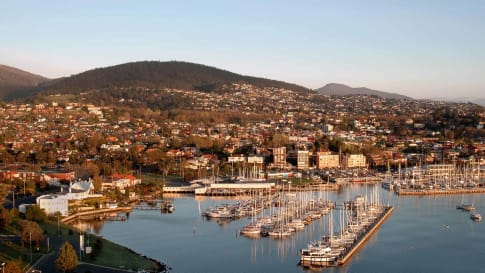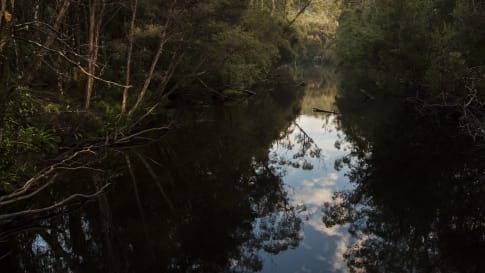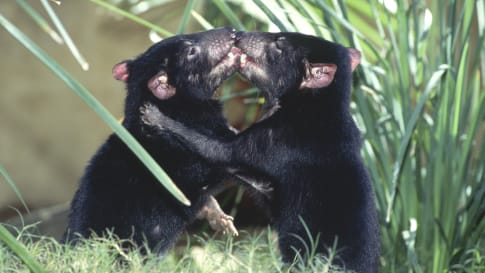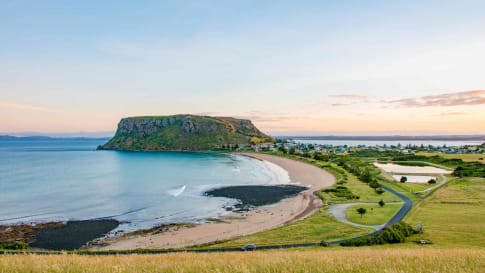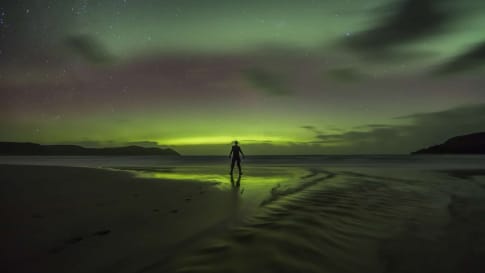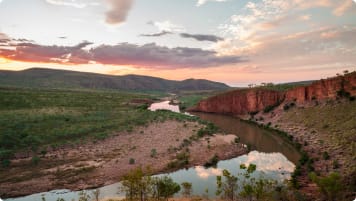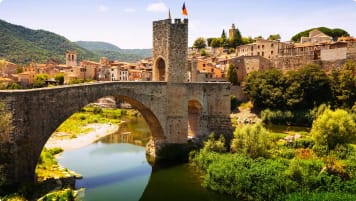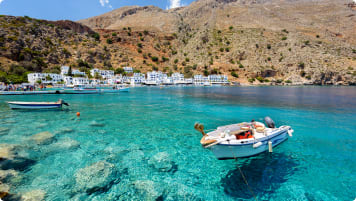Discovering Tasmania’s Wildlife
Small group tour of up to 15 mature and seniors travellers visiting and learning about Tasmania's wildlife and history. Visit Maria Island, Freycinet peninsula, Cradle Mountain, Strahan, Lake St Clair and Bruny Island over 16 days.
From $8,889USD
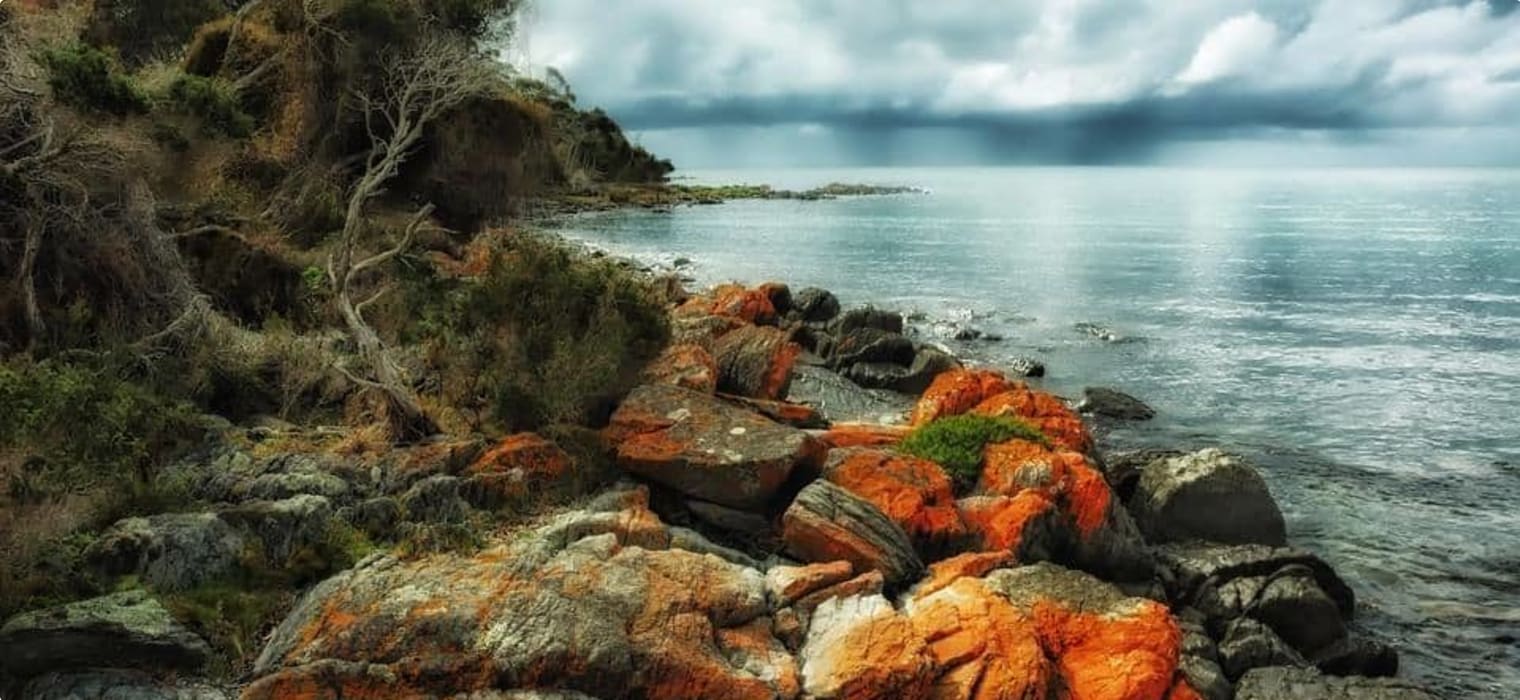
Highlights
- 1. Walk the Hazards loop track to Wineglass bay on the Freycinet peninsula.
- 2. Enjoy a cruise across Macquarie Harbour from Strahan and up the Gordon River, to see the fabled Huon Pine in its natural habitat
- 3. Hear the story of Lake Pedder, the Franklin River and other major chapters in Tasmania’s conservation history
- 4. Visit and study Bruny Island wildlife.

Departure Dates
| Departure Date | Price |
|---|---|
| 05 November 2025 Ends 23 November 2025 • 19 days $8,889 Twin $10,674 Single Pre-guaranteed | Selected |
| 04 February 2026 Ends 22 February 2026 • 19 days $9,021 Twin $10,872 Single Available | |
| 04 November 2026 Ends 22 November 2026 • 19 days $9,021 Twin $10,872 Single Available |
Small group tour to Discover Tasmania's wildlife
Tasmania is one of Australia's last great wildlife strongholds. This makes it a naturalist's paradise on one of our Tasmania package tours. On this guided tour for a maximum of 12 people, Wildlife-rich destinations are found at regular intervals along our route on this 19-day tour of Tasmania for mature and senior travellers. There is an opportunity to observe a variety of endemic species, like the Eastern Quoll, the Quoll are rare or extinct on the Australian mainland, but still relatively common in many parts of Tasmania. Combine this with the dramatic scenery of places like the Gordon River, Cradle Mountain, the rugged South East coast and the South West coast and any National Park creates for a visually stunning trip. We enjoy a relatively easy walk during the tour to the stunning Shadow Lake for example, near Lake St. Clair and experience the ‘real Tasmania’. Each day of this trip reveals amazing aspects of Tasmania’s ecology. By day, Wombat, Platypus and Echidna are foraging abroad and as night falls, many other animals, like the Tasmanian Pademelon, Bennett’s Wallaby and Long-nosed Potoroo appear from their hidden daytime resting places. This particular holiday package allows our tour guide to get you to the right locations to observe the shy creatures of the night.
The aim of Odyssey's Tasmania package tours is to provide access to a variety of natural Tasmanian locations where wildlife can be experienced, including visiting World Heritage areas such as the Tarkine rainforest or places such as Cape Grim in the North West Where possible, ecosystems will be analysed in relation to the animals we see. During our learning about the wildlife of Tasmania we will also examine aspects of Tasmania’s Aboriginal and Early European history, as well as a look at the conservation history of this island state.
Odyssey's package tours to Tasmania are limited to a maximum of 12 travellers on any one program.
Tour of Tasmania
We commence the tour of Tasmania wilderness leaving Hobart promptly in the morning to travel round to Port Arthur. This small group tour has a full itinerary to work through to complete these package tours to Tasmania. Our first day tour is from Port Arthur, out on the water on a Wilderness Cruise to experience and learn about the Tasman National Park on the east coast and its’ rich wildlife. There is a chance to observe species like Australian and New Zealand Fur Seals, Common and Bottlenose Dolphins, migrating whales, seabird feeding frenzies, including Shearwaters, Gannets, Gulls & Little Penguins for example. We will travel in a 12.5 metre purpose-built Naiad vessel around this maritime National park. We return to Port Arthur and take time after lunch to explore the notorious Port Arthur Prison.
Maria Island
The following day your tour of Tasmania group of seniors travellers departs for Coles bay but first stop is to have a day trip on Maria Island. As you cross to Maria island on the early morning ferry you follow the path of the Aboriginal people, who for thousands of years made regular canoe crossings to the island they knew as Wukaluwikiwayna. Archaeological evidence suggests that more than 35,000 years Aboriginal people have lived in the homelands of the Oyster Bay nation. The Tasmanian Aboriginal people from Maria Island were known as the Puthikwilayti.
Maria Island became a penal settlement in 1825 and was soon infamous for the number of escapes across the water. The settlement, located at Darlington, was conceived as a half-way house between the extreme of hard labour at Macquarie Harbour at Strahan on Sarah Island (that the group visits on Day 9) and a stint in a road or chain gang. From 1842 Maria was used as a convict probation station, but by 1850 this mainly agricultural station was abandoned. The significance of the convict probation era at Marie Island, Darlington was recognised in 2010 by World Heritage Listing as part of the Australian Convict Sites World Heritage Property. More information on World Heritage listings can be found on our page, and on the Heritage Tasmania website.
Maria Island’s landscape today almost 200 hundred years on is a microcosm of unique cultural heritage of the indigenous community and British settlement, overlain today as a National park with native Pademelons, who have always called Maria Island home, forester kangaroos, Bennett's wallabies, Flinders Island wombats, Cape Barren geese and Tasmanian native hens. Maria Island has all but one of the Tasmania's twelve endemic birds living on the island, including the endangered forty-spotted pardalote, green rosellas, and the majestic wedge-tailed eagle. Sharp eyes may spot tiny hooded plovers, sooty and pied oyster catchers, and little and fairy terns on the beaches of Maria Island during our visit. We spend the day taking a slow walking tour around the island pausing for lunch before taking the mid-afternoon ferry back. Our coach takes the tour group along the east coast to Coles bay.
Freycinet peninsula
Coles bay enables this tour of Tasmania to walk from the lodge in a loop following Hazards track through the National park to Wineglass Bay on the Freycinet Peninsula. Freycinet peninsula is a dramatic coastline. The eastern side of the Freycinet Peninsula has soaring sea cliffs, secluded coves, and dramatic ocean beaches shaped by the granite peaks that form Hazards range on Tasmania's east coast. We pause at the Wineglass bay lookout for photos. Whilst Wineglass bay is considered by travellers to be one of the top ten beaches in the world. Our guided tour continues on past wide deserted beaches and aquamarine shallows at Bryans and Cooks beaches on the western side of the peninsula, we learn about the aboriginal history in the area as we walk back along Hazards beach and the stories about the middens behind the dunes we past. We continue round to return to the lodge at Coles bay.
Welborough pass and Launceston
The following day, this small group tour of Tasmania heads to Launceston. We follow Tasmania's east coast for some distance and then turn inland for Launceston via Weldborough Pass. The purpose of visiting Weldborough pass is to take a short walk to view and learn about the wet Sclerophyll fern forest that once covered much more of this region. We carry onto Launceston. In the afternoon we take a short walking tour around the town to get an appreciation of the history and visiting the Victoria museum which covers Aboriginal history, colonial settlement, geology, etc., as well as Tasmania’s unique natural history.
Cradle Mountain
Next, your Tasmania tour heads up to Cradle Mountain via the Tamar wetland centre and Sheffield.
This small group tour of Tasmania has this morning a guided tour of the wetlands. They are a superb site to see early morning bird life in Tasmania from. Some 60 birds species have been identified on the island including several species of duck, black swans, egrets, cormorants and swamp harriers and northern hemisphere migrants such as the common greenshank. Tamar island reserve is an important breeding site for the nationally vulnerable green and gold frog. This frog was formerly abundant in the Tamar valley but has declined significantly since the 1970s. The Tamar Wetlands also include one of the largest remaining areas of vegetation dominated by Phragmites Australis, or common reed and Swamp paperbark, Melaleuca ericifolia. From Tamar we drive on to Sheffield for lunch and to have time to walk around this town to look some 140 + murals that decorate the walls and are part of an annual festival.
We spend 2 nights in the Cradle Mountain National park. Initially Cradle mountain was called Ribbed Rock, this iconic peak was renamed the more evocative Cradle Mountain by Van Diemen's Land Company surveyor Joseph Fossey. The name was due to the 1545-metre mountain's now-familiar dipping profile between the main summit and Little Horn. Cradle Mountain and surrounds have been shaped by glacial erosion and deposition over the past two million years part of this heritage are the spectacular landscapes to view. The various glaciers that covered the area have left behind a variety of glacial features, including the valley of the Dove River that flows from Dove lake and numerous lakes and tarns. The National Park is also one of the best places in Tasmania to view the Aurora Australis, with the minimal light pollution highlighting the dancing aurora for those lucky enough to catch it. Cradle Mountain also has a diverse mosaic of vegetation communities from rainforests to buttongrass moorlands. Many of these plant species in these habitats have a direct descendancy from Gondwana, including long-lived endemic conifers such as the King Billy pine, pencil pine, celery-top pine, and Tasmania's deciduous beech (fagus), which colours the hillsides each autumn.
Cradle Mountain Gondwanan heritage is further revealed through the existence of species such as velvet worms, fish in the family Galaxiidae, aquatic insects and crustaceans. Other invertebrates, such as the pencil pine moth, reveal even more ancient links to the super-continent Pangea.
Cradle Mountain contains a wide range of habitats and is home to some of the world's largest carnivorous marsupials – the Tasmanian devil, spotted-tailed quoll and eastern quoll – as well as wombats, platypus and echidna. Cradle mountain National park goes beyond spectacular views. Archaeological evidence indicates ongoing human settlement on Cradle Mountain through the last ice age. evidence suggests the Aboriginal community where using the Mountain as a hunting ground for some 3,000 years. Today's Aboriginal community continue to have a strong connection to this cultural landscape. From the 1820s to the park's declaration as a reserve in 1922, these Aboriginal homelands were visited by explorers, prospectors, trappers, hunters, timber getters and graziers. Proposals for the area varied from large mines and railways, to farms and plantations, though such activity was restricted.
The group spends time with a guided tour of the Tasmanian Devils at the Cradle mountain sanctuary and taking a walking tour around Dove lake with a focus on the areas biodiversity. In the afternoon we take time to visit the Waldheim Chalet, not only to see where Kate & Gustav Weindorfer lived but to pause and reflect on the vision of the couple in pursuing the early call for this area to be a National park and to appreciate the early work undertaken in studying and cataloguing the Flora and Fauna of Cradle Mountain.
"in January 1910, Kate Weindorfer clambered over ice-covered boulders in her ankle-length skirt and beribboned hat, sometimes crawling on all fours, to reach the summit of Tasmania’s Cradle Mountain. She was the first white woman to stand on this peak. Her Austrian-born husband and fellow botanist, Gustav Weindorfer, a man bred in high altitudes, had breezed up here an hour earlier with two other bushwalkers in tow, encountering lizards, grasshoppers and a soaring eagle hunting for prey." Kindred, A Cradle Mountain Love Story by Kate Legge 2019.
Stanley and Cape Grim
Returning to the coast the group heads to Stanley and the "Nut" where we spend 2 nights exploring the region including a visit to Cape Grim and the Wind power station. It is the groups first experience of West coast. The following day we carry through to along the unsealed West coast highway to Corina where we base ourselves for 2 nights.
This small group tour of Tasmania remains in the National park network of Tasmania, moving from Cradle Mountain National Park via the wildlife-rich walk to Pencil Pine Falls to the historic mining town of Zeehan. Our day takes along the West coast Highway, which demarks the southern edge of the Tarkine rainforest. It is an exhilarating day whether blue skies of fresh into the roaring 40's at the edge of the World. it does not take a lot to imagine the sailing ships under 3 acres of canvas finally reaching Tasmania! The Tarkine is the largest area of Gondwanan cool-temperate rainforest in Australia , it is an area that featured in Tasmania's early mining history and is therefore controversial as pressure from Mining groups continues today. The area's high concentration of Aboriginal sites has led to it being described by the Australian Heritage Council as "one of the world's great archaeological regions". We find time to enter a National park to explore and understand the ecological importance of the Tarkine rainforest.
Corinna proppies a place to explore in the wilderness.
Macquarie Harbour & Gordon River
We travel to Zeehan and this tour of Tasmania wildlife continues to Strahan on the west coast. Strahan is on the edge of Tasmania's World Heritage-listed, Franklin-Gordon Wild Rivers and South West National Park, they have been combined to protect one of the world’s last great temperate rainforests. During the groups time in Strahan we take a guided tour across the bay to Sarah island and along part of the Gordon river, this is expected to be visually a unique cruise with spectacular views along the Gordon river. The guided tour of Sarah island is Macquarie Harbour Penal Station, just over 1150 prisoners served time at Macquarie Harbour, of whom fewer than 30 were women. The main settlement was located on Sarah Island, but there were many outlying stations and the penal station covered a vast area. The enigma of Macquarie Harbour penal station is that, despite its fearful reputation as a site of punishment, it also functioned as a highly productive colonial shipyard. This small island was known to Aboriginal people as Langerrareroune, was called Sarah Island by the British colonisers It was in Aboriginal records a bitter staging-post for west coast Aboriginal people or Toogee to be forcibly detained en route to Flinders Island. The group then tours part way along the river on a Gordon river cruise, viewing the temperate forests and gaining an understanding of the importance of Huon pine from the local Huon valley.
The Franklin-Gordon Wild Rivers National Park is home to important archaeological sites marking the southern-most extent of human habitation during the last Ice Age.
After the groups evening meal there is an opportunity to take a trip out in the dunes to a shearwater colony to witness the return from feeding of the migratory birds along this rugged coastline, exposed to the weather. The following day we take a the Gordon river cruise into this world heritage listed National park.
Lake St. Clair
This small group tour of Tasmania changes location today, swapping the west coast for central Tasmania and Lake St. Clair. Having spent several days learning and observing the ecology of Tasmania, the groups arrival in Queenstown will be a shock, this is an area of Tasmania that was denuded for copper, though the native vegetation are covering the scars. We stop in Queenstown to visit the Galley Museum, Queenstown's first brick hotel, the elegant Imperial (1898) on the corner of Driffield and Sticht Streets. The museum was established by Eric Thomas who spread his remarkable photo collection through seven rooms. There are over 800 photographs, all have been collected by Mr Thomas and all record the history of Tasmania's West Coast. Each photograph is accompanied by a detailed caption recording the history of the image. As we depart Queenstown we drive past The Gravel Football Oval. To play a game on Queenstown's gravel oval has got to be the height of stupidity or a crazy brave preparedness to come off grazed and bleeding. Not surprisingly it has terrified visiting teams for nearly a century. It is located off Wilsdon Street which runs off the Lyell Highway.
From Queenstown this Tasmania tour carries on to Lake St. Clair, where we spend the night. The Aboriginal name for Lake St. Clair is leeawuleena, meaning ‘sleeping water’, and on still days you can genuinely appreciate the origins of this name. Lake St. Clair is part of the celebrated Cradle Mountain-Lake St. Clair National Park – the heart of the Tasmanian Wilderness World Heritage Area. Lake St. Clair, the deepest lake in Australia. The day starts with a guided tour on a boat to Narcissus Bay at the northern end Lake St. Clair. The group then has the option of a return walk or boat ride back to the Lodge. Spend the rest of the day walking to Shadow Lake on the loop track from the Lodge this is a walk with spectacular scenery in a pristine wilderness setting .
Mount Field National Park & Styx river
Today our guided tour takes us through the various ecosystems from the valley floor to the top of Mount Field National Park, where we can explore the boulder streams and the alpine meadows. This tour is almost a recap of all we have seen during the period of the tour. As we descend from the central plateau we detour to view the giant gums of the Styx River, the rugged World Heritage scenery and great display of heathland flora, including the Leatherwood to the backdrop of the rugged Western Arthurs Range. The group then continues, returning to Hobart for 2 nights on Tasmania's east coast via Derwent Valley, Mount Wellington & if time Russell Falls.
Bruny Island
For our last full day of our holidays to Tasmania itinerary, our small group tour of Tasmania leaves Hobart to visit Bruny Island. We take Bruny island's guided tour, learning about conservation work as well as the Wildlife and fauna on the island.
On this holiday to Tasmania tour we typically spend between 1-3 nights in each location, a range of forms of accommodation types will be used on this tour including hotels, motels and lodges.
Prices for this Tasmania holiday package are indicative only at this time, based on general rates for regional Australia touring. April 2020.
Articles about Australia published by Odyssey Traveller:
- The Kimberley: A Definitive Guide
- Uncovering the Ancient History of Aboriginal Australia
- Aboriginal Land Use in the Mallee
For all the articles Odyssey Traveller has published for mature aged and senior travellers, click through on this link.
External articles to assist you on your visit to Adelaide and Tasmania:
Gallery

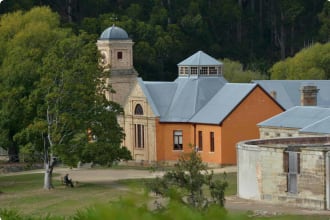

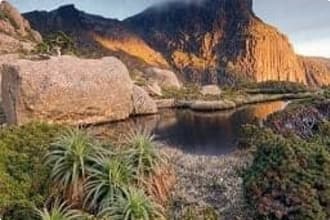
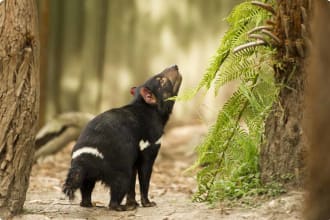
Itinerary
19 days
Day 1: Hobart
Accommodation: Mövenpick Hotel Hobart, or similar
Make your independent arrival to your Hobart accommodation. Meet your fellow travellers who are joining you on one of Odyssey’s scheduled Tasmania package tours. Tonight there is a welcome dinner.
Day 2: Port Arthur
Accommodation: Lufra Hotel, or similar
This morning, our coach tours to Tasmania for seniors takes a 3 hour Wilderness Cruise from Port Arthur to experience this dramatic Tasman National Park coastline and its’ rich wildlife, with a chance to observe species like Australian and New Zealand Fur Seals, Common and Bottlenose Dolphins, migrating whales, seabird feeding frenzies, including Shearwaters, Gannets, Gulls & Little Penguins. We will travel in a 12.5 metre purpose-built Naiad vessel. In the afternoon we explore the notorious Port Arthur Prison. Potentially go night spotlighting for the little-known Long-nosed Potoroo.
Day 3: Freycinet Peninsula
Accommodation: Swansea Motor Inn, or similar
Visit to Maria Island. After the ferry crossing we will explore and find out about elements of the natural heritage, the convict and industrial relics and some of the interesting rock features. We travel on the afternoon to Coles Bay.
Day 4: Freycinet Peninsula
Accommodation: Swansea Motor Inn, or similar
There will be an opportunity to spend some time on a comfortable walk to Wineglass Bay along the famous and scenic Hazards Track. This is a full day’s loop walk, starting & finishing at the Lodge. Walk along the beautiful Hazard Beach and view the Aboriginal middens behind the dunes.
Day 5: Launceston
Accommodation: Mercure Launceston, or simmilar
Launceston today via Weldborough Pass, where we can take a short walk to view the wet sclerophyll fern forest that once covered much more of this region.
In the afternoon we walk to the Queen Victoria Museum, Inveresk, to view the amazing “Tasmanian Connections” exhibition, which covers Aboriginal history, colonial settlement, geology, etc., as well as Tasmania’s unique natural history.
Day 6: Cradle Mountain
Accommodation: Cradle Mountain Hotel, or similar
Our route takes us through Tamar Island Wetland centre and Sheffield. A scenic drive through the mountains takes us to the magnificent World Heritage Marakoopa Cave where the tour is hosted by local guides. See the many limestone features that make this cave famous.
We arrive on Cradle Mountain in the afternoon.
Day 7: Cradle Mountain
Accommodation: Cradle Mountain Hotel, or similar
Spend the day walking the trails of Cradle Mountain, including the famous Dove Lake circuit and the beginning of the Overland Track. Visit the Waldheim settlement where Gustav Weindorfer began his famous conservation work, which resulted in this amazing national park. Here we will see Tasmania at its natural best. Weather permitting a night spotlight walk will be attempted. Wombats, Echidna, Platypus, Tiger Quolls, Bennett’s Wallabies and Pademelons all inhabit this area.
Day 8: Stanley
Accommodation: Stanley Village, or similar
Today we explore Stanley via Waratah.
Day 9: Stanley
Accommodation: Stanley Village, or similar
This morning we travel to Cape Grim, suicide bay on Van Diemen land. We visit the wind farm and learn about the CSIRO monitoring station work.
Day 10: Tullah
Accommodation: Tulla Lakeside Lodge, or similar
We travel through the Tarkine rainforest along the west coast highway. The road, unsealed takes us through the forest, along the coast and up into the mountains on some journey.
Corinna is your home in the wilderness – an oasis in the heart of the Tarkine. There are plenty of accommodation alternatives at Corinna, including the original Roadman’s cottage with double bed. The old Butcher’s shop, General store, Great Western and Mews are the permanent homes of our staff. Sixteen new wilderness retreats have been built to the original style. All have modern amenities including ensuites. The old pub which has been converted into a guest house (with single and double rooms) is also available for group accommodation.
Day 11: Tullah
Accommodation: Tulla Lakeside Lodge, or similar
Today we go into the Tarkine rainforest with our guide to learn about the wilderness and the history of the region.
Day 12: Strahan
Accommodation: Strahan Village, or similar
Depart Corinna, for the short drive to Zeehan and onto Strahan. Free afternoon in Strahan.
Day 13: Strahan
Accommodation: Strahan Village, or similar
Take a comfortable cruise on the “Eagle” across Maquarie Harbour to the old penal settlement of Sarah Island and up the Gordon River to learn of the old Huon Pine industry and the fight for wilderness preservation.
There is an opportunity to visit a shearwater colony in the coastal dunes after dinner, subject to the time of the year.
Day 14: Tarraleah
Accommodation: Tarraleah estate, or similar
Travel from Strahan on the west coast via Nelson falls, Donaghy’s hill the Franklin-Gordon Wild Rivers National Park, Queenstown to Lake St Clair.
Day 15: Tarraleah
Accommodation: Tarraleah estate, or similar
Take an early morning boat trip to Narcissus Bay at the northern end of the deepest lake in Australia – Lake St. Clair. We have the option of a return walk or boat ride back to the Lodge. Spend the rest of the day walking to Shadow Lake on the loop track from the Lodge.
Day 16: Maydena
Accommodation: The Giants Table, or similar
In the morning we visit Pencil lake be fore we travel south from Lake St Clair to Maydena. The tour stops along the way to explore several areas of interest.
Day 17: Hobart
Accommodation: Mövenpick Hotel Hobart, or similar
We take a drive through the various ecosystems from the valley floor to the top of Mount Field National Park, where we can explore the boulder streams and the alpine meadows. Enjoy the giant gums of the Styx River, the rugged World Heritage scenery and great display of heathland flora, including the Leatherwood to the backdrop of the rugged Western Arthurs Range.
We then depart via Derwent Valley, Mt Wellington & Russell Falls for Hobart.
Day 18: Hobart
Accommodation: Mövenpick Hotel Hobart, or similar
For our last full day, our small group tour of Tasmania leaves Hobart to visit Bruny Island. We have a guided tour of the island learning about conservation work as well as the Wildlife and fauna on the island.
Farewell dinner.
Day 19: Hobart
Tour ends after breakfast.
Tour Notes
- Activity Level is introductory to moderate, since we will be visiting national parks and conservation areas and walking the trails provided
- There are no ‘strenuous’ walks on this trip and usually there are easy options available on the days we are doing longer walks
- Transport will be a Coaster mini-bus with a trailer for luggage.
- Group size restricted to 12 people.
Includes / Excludes
What’s included in our Tour
- 18 nights accommodation.
- 18 Breakfasts, 9 Lunches, 12 Dinners.
- Odyssey Tour Leader for the duration of the tour.
- All activities including entrance fees.
What’s not included in our Tour
- Travel to and from Hobart.
- Items of a personal nature such as telephone calls and laundry.
Participants must be able to carry their own luggage, climb and descend stairs, be in good health, mobile and able to participate in 3-5 hours of physical activity per day, the equivalent of walking / hiking up to 8 kilometers per day on uneven ground.
Book now
Make it a private tour
Easing your journey
Crossing international borders with restrictions
The list of requirements to travel internationally has changed and will continue to change for several years. Odyssey is here to assist you in managing your way through these requirements:
For more information see our Crossing international borders with restrictions page.
Book With Confidence
If less than 30 days before your tour starts you are unable to travel as a result of Government travel restrictions, Odyssey Traveller will assist you with a date change, provide you with a credit or process a refund for your booking less any non-recoverable costs.
See Terms and conditions for details.
Peace of Mind Travel
The safety of our travellers, tour leader, local guide and support staff has always been our top priority and with the new guidelines for public health and safety for keeping safe for destinations around the world, we’ve developed our plan to give you peace of mind when travelling with us.
See Peace of Mind Travel for details.
Reading List Download PDF
A History of Tasmania
Henry Reynolds
This captivating work charts the history of Tasmania from the arrival of European maritime expeditions in the late eighteenth century, through to the modern day. By presenting the perspectives of both Indigenous Tasmanians and British settlers, author Henry Reynolds provides an original and engaging exploration of these first fraught encounters. Utilising key themes to bind his narrative, Reynolds explores how geography created a unique economic and migratory history for Tasmania, quite separate from the mainland experience. He offers an astute analysis of the island's economic and demographic reality, by noting that this facilitated the survival of a rich heritage of colonial architecture unique in Australia, and allowed the resident population to foster a powerful web of kinship. Reynolds' remarkable capacity to empathise with the characters of his chronicle makes this a powerful, engaging and moving account of Tasmania's unique position within Australian history.
A Handbook of the Birds of Tasmania and Its Dependencies
Frank Mervyn Littler
This wonderful book on the birds of Tasmania, by Frank Mervyn Littler, was originally published in 1910. Illustrated with numerous photographs, this work details the many varieties of bird to be found on the Antipodeans island. It has chapters on 'Birds of Prey', 'Perching Birds', 'Parrots', and much more, giving notes on both the physical characteristics of the genera as well as observations on their behaviour. This is a fantastic companion for bird-watching, or for anyone with an interest in the study of avifauna. A specially commissioned new introduction has also been added to the republication of this work to help place it in its historical context.
Saving the Tasmanian Devil: How Science is Helping the World's Largest Marsupial Carnivore
DOROTHY HINSHAW PATENT
In this addition to the critically acclaimed Scientist in the Field series, Dorothy Patent follows the scientists trying to put a stop to a gruesome disease before it's too late. Tasmanian devils are dying at an alarming rate from a type of tumor that appears to be contagious. What scientists are learning while researching the Tasmanian devil has potential to affect all animals, and even humans, as they learn more about how to prevent and hopefully eradicate certain genetic diseases. In the late 1990s, a fatal disease called Devil facial tumor disease began wiping out the Tasmanian devil population, killing nearly 90 per cent of the devils over the past 20 years. Why was the entire population getting the same disease? Was it contagious? Then geneticist Jenny Graves made a discovery that was hard to believe, but true: the tumors were cloning and multiplying between animals. If researchers cannot get to the bottom of this mystery, this fascinating mammal will soon be gone. Dorothy Hinshaw Patent takes readers on an unforgettable tour of the Tasmania to meet the scientists working to save the devil before it's too late. AGES: 10 to 12 AUTHOR: Dorothy Hinshaw Patent holds a Ph.D. in zoology from the University of California, Berkeley. SELLING POINTS: The well-known Tasmanian devil appeals to kids from its cartoon counterpart. Despite its notoriety as a crazy mammal with big teeth who wreaks havoc, real Tasmanian devils are actually more docile, not vicious, and family oriented. They are Australia's largest native predator still remaining. Dorothy Patent has written the story as a science and travel journal, as she journeys from Australia to Tasmania and back again, sharing the places she visits and other animals she encounters along the way. Numerous female scientists at the helm here, especially in the field of medicine/disease and genetics. It's appealing to see epidemiology, genetics, and animal behavior come together in one story and inside the "science presenting a mystery that needs to be solved" framework that works so well in the Scientist in the Field books.
The Tasmanian Tiger: Extinct or Extant?
Michael Williams
Does the Tasmanian Tiger still roam the island state, parts of the Australian mainland, and the northern land mass of Irian Jaya-Papua New Guinea? Despite being hunted to extinction in the early part of the 20th century, the Tasmanian Tiger continues to stalk the imaginations of people the world over. What's more, hundreds of reports of the striped dog-like marsupial with the fearsome gaping jaw are made each year in Australia. In The Tasmanian Tiger: Extinct or Extant?, biologists, geneticists, naturalists, and academics explore the evidence for and against the continuing existence of Thylacinus cynocephalus.
Nature in Tasmania: Three Nature Study Stories - Blue Wren, Skinks, Native Hens
Jan Frost
Three nature stories depicting the life cycle of the brilliantly coloured Superb Fairy Wren, common garden Skinks and flightless Native Hens. All the fauna live in the natural habitat of the Tamar Valley of Northern Tasmania. At the time of publication their habitat is not endangered.
Into the Heart of Tasmania: A Search For Human Antiquity
Rebe Taylor
In 1908 English gentleman Ernest Westlake packed a tent, a bicycle and forty tins of food and sailed to Tasmania. On mountains, beaches and in sheep paddocks he collected over 13,000 Aboriginal stone tools. Westlake believed he had found the remnants of an extinct race whose culture was akin to the most ancient Stone Age Europeans. But Westlake encountered living Indigenous communities and unwittingly documented what he could not perceive: an Aboriginal people with a complex culture and a deep past.
The Ship That Never Was: The Greatest Escape Story Of Australian Colonial History
Adam Courtenay
The greatest escape story of Australian colonial history by the son of Australia’s best-loved storyteller
In 1823, cockney sailor and chancer James Porter was convicted of stealing a stack of beaver furs and transported halfway around the world to Van Diemen's Land. After several escape attempts from the notorious penal colony, Porter, who told authorities he was a 'beer-machine maker', was sent to Macquarie Harbour, known in Van Diemen's Land as hell on earth.
Many had tried to escape Macquarie Harbour; few had succeeded. But when Governor George Arthur announced that the place would be closed and its prisoners moved to the new penal station of Port Arthur, Porter, along with a motley crew of other prisoners, pulled off an audacious escape. Wresting control of the ship they'd been building to transport them to their fresh hell, the escapees instead sailed all the way to Chile. What happened next is stranger than fiction, a fitting outcome for this true-life picaresque tale.
The Ship That Never Was is the entertaining and rollicking story of what is surely the greatest escape in Australian colonial history. James Porter, whose memoirs were the inspiration for Marcus Clarke's For the Term of his Natural Life, is an original Australian larrikin whose ingenuity, gift of the gab and refusal to buckle under authority make him an irresistible anti-hero who deserves a place in our history.


